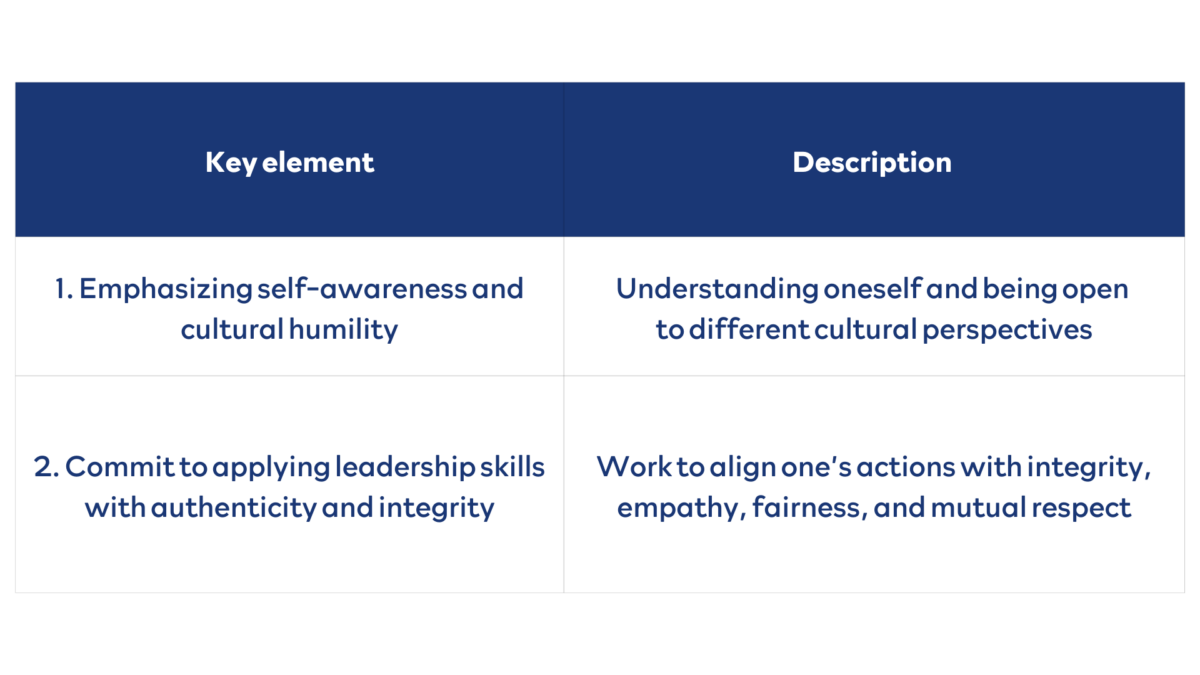The two key elements of a good supervisory relationship

What makes a good supervisory relationship in the child welfare workforce?
In child welfare, a good supervisory relationship is the heartbeat of a team. It helps everything run smoothly and employees feel supported.
A good supervisory relationship is guided by integrity, empathy, fairness, and mutual respect. By embracing these guiding principles, supervisors can foster a culture of trust and collaboration, where open communication and feedback are encouraged. This is crucial considering that this work impacts the lives of children and families.
Employees feel valued when their supervisors listen and respect them. By getting to know their employees, supervisors can be confident in giving and receiving feedback. This can help a team feel more connected with each other.
When it comes to a supervisory relationship, getting it right means more than just being good at your job—it’s about caring deeply for the children and families who depend on us.
The two key elements of a good supervisory relationship
Two things are vital for a good relationship between supervisors and employees.
First, it’s being aware of ourselves and respecting different cultures. Second, it’s making sure your actions as a supervisor are grounded in integrity, empathy, fairness, and mutual respect.
These elements help us support children, families, and the child welfare workforce.
The table below describes these elements in more detail:

Benefits of emphasizing self-awareness and cultural humility—Key element 1
- Improved communication and understanding between supervisors and employees
- Increased trust and respect within the team, leading to stronger relationships and higher morale
- Enhanced ability to navigate cultural dynamics and address conflicts effectively
The impact is a more inclusive work environment where all team members feel valued and respected. This leads to higher engagement and productivity.
It reduces the likelihood of misunderstanding or miscommunication based on cultural differences. The result is improved collaboration and better outcomes.
Examples of Emphasizing self-awareness and cultural humility—Key element 1
- Assess current understanding: During meetings, make time to reflect on assumptions about different cultures. Invite team members to share their perceptions of cultural diversity and how it impacts work interactions. Use scenarios to illustrate cultural differences.
- Facilitate open dialogues: Schedule regular team discussions on culture. This creates a space for team members to share experiences, perspectives, and questions. Cultivate an environment where active listening and respectful dialogue thrive.
- Lead by example: Showcase genuine curiosity and respect through your leadership actions. Seek opportunities for cultural learning and show inclusivity by including all perspectives in decision-making processes.
- Recognize positive behaviors: Acknowledge and celebrate instances of cultural humility among team members during meetings or through individual recognition. Highlight specific actions that embody respect, openness, and empathy to inspire others.
- Implement anonymous feedback: Set up a system for anonymous feedback, such as an online survey or suggestion box, to gather insights on cultural humility efforts without fear of reprisal. Make sure confidentiality and anonymity to encourage candid feedback, using the input received to drive improvement.
Try this:
- Dedicate the first fifteen minutes of the next team meeting to discuss biases and assumptions about cultural diversity. Provide prompts to encourage sharing such as asking each team member to reflect on a recent interaction with a colleague from a different cultural background.
- Plan a monthly “Cultural Diversity Forum.” Team members can take turns sharing personal experiences related to cultural diversity. Assign a moderator so discussions stay respectful.
- Share your experience attending a cultural event or engaging in a cross-cultural exchange during the next team meeting. Be sure to highlight key takeaways and insights gained.
- Introduce a monthly “Cultural Humility Champion” award to recognize team members who consistently show exemplary behavior in embracing cultural diversity.
- Launch an anonymous survey using a platform like Google Forms to collect feedback on the team’s cultural humility initiatives. Share the results transparently. Outline action plans to address areas for improvement.
Benefits of Applying leadership skills with authenticity and integrity—Key element 2
- Builds trust and credibility among team members, showing consistency and transparency in their decision-making
- Enhanced employee engagement and commitment, as staff feel a sense of purpose and alignment with the organization’s mission and values
These actions strengthen organizational culture and identity, leading to higher levels of employee satisfaction and loyalty.
They also drive organizational performance and innovation. Employees are motivated to contribute their best work in support of shared values and goals.
Building a positive reputation within child welfare helps engage clients, partners, and community members who share the organization’s values and vision.
Examples of Applying leadership skills with authenticity and integrity—Key element 2
- Reflect on guiding principles: Consider how your actions align with integrity, empathy, fairness, and mutual respect. Ask yourself “Do I understand and respect different perspectives and backgrounds?” “How do I shift my leadership style to align with the guiding principles of integrity, empathy, fairness, and mutual respect? Especially during conflict?”
- Promote values-based decision-making: Foster a culture where teams can reflect on actions and decisions to make sure they align with guided principles. Have value-based discussions in supervisory meetings or one-on-one coaching sessions. Encourage supervisors to regularly evaluate decisions through the lens of integrity, empathy, fairness, and mutual respect.
- Facilitate open dialogue: Create a safe and supportive environment for team members to share their ideas. Encourage supervisors to actively listen to their team members’ contributions toward building safe and inclusive environments, and incorporate them into team goals and strategies.
- Model values-aligned behavior: Lead by example by showing transparency and integrity in decision-making. Prioritize open communication and ethical leadership in interactions with your team and community partners.
- Encourage continued alignment: Emphasize the importance of ongoing alignment with guiding principles and offer support to supervisors to reflect and refine their practices. Offer resources to help supervisors navigate ethical dilemmas and keep alignment with their values over time. These could be coaching, training, or mentorship opportunities.
Try this:
- Schedule regular time for self-reflection. This can be as simple as setting aside ten minutes in your day. Use this time to write about a recent interaction with your team. During this time, reflect on how your values influenced your approach. By integrating this brief reflection into your routine, you can gain valuable insights into your leadership style without feeling overwhelmed by a lengthy journaling session.
- Introduce value-based discussions into your supervisory meetings. Offer discussion topics centered around how guided principles influence decision-making. Encourage supervisors to ask themselves questions like, “Does this decision reflect my core values? How will it impact the team and the organization?”
- Host a team-building session to encourage open dialogue on guiding principles. Create rules for respectful communication and active listening. Have discussions where team members can share their values and explore their contribution to the team’s success.
- Find ways to model values-aligned behavior in your daily interactions with your team. Communicate openly about the rationale behind your decisions and how they align. Demonstrate integrity leadership by upholding shared values and principles within the team.
- Develop a plan for ongoing professional development focused on values alignment. Regularly revisit and refine your guided principles as they evolve in your role. Provide support and resources to help navigate ethical dilemmas and keep alignment with your principles.
By prioritizing genuine connections and value-aligned work practices, supervisors can cultivate work environments that promote job satisfaction and productivity for all employees.
